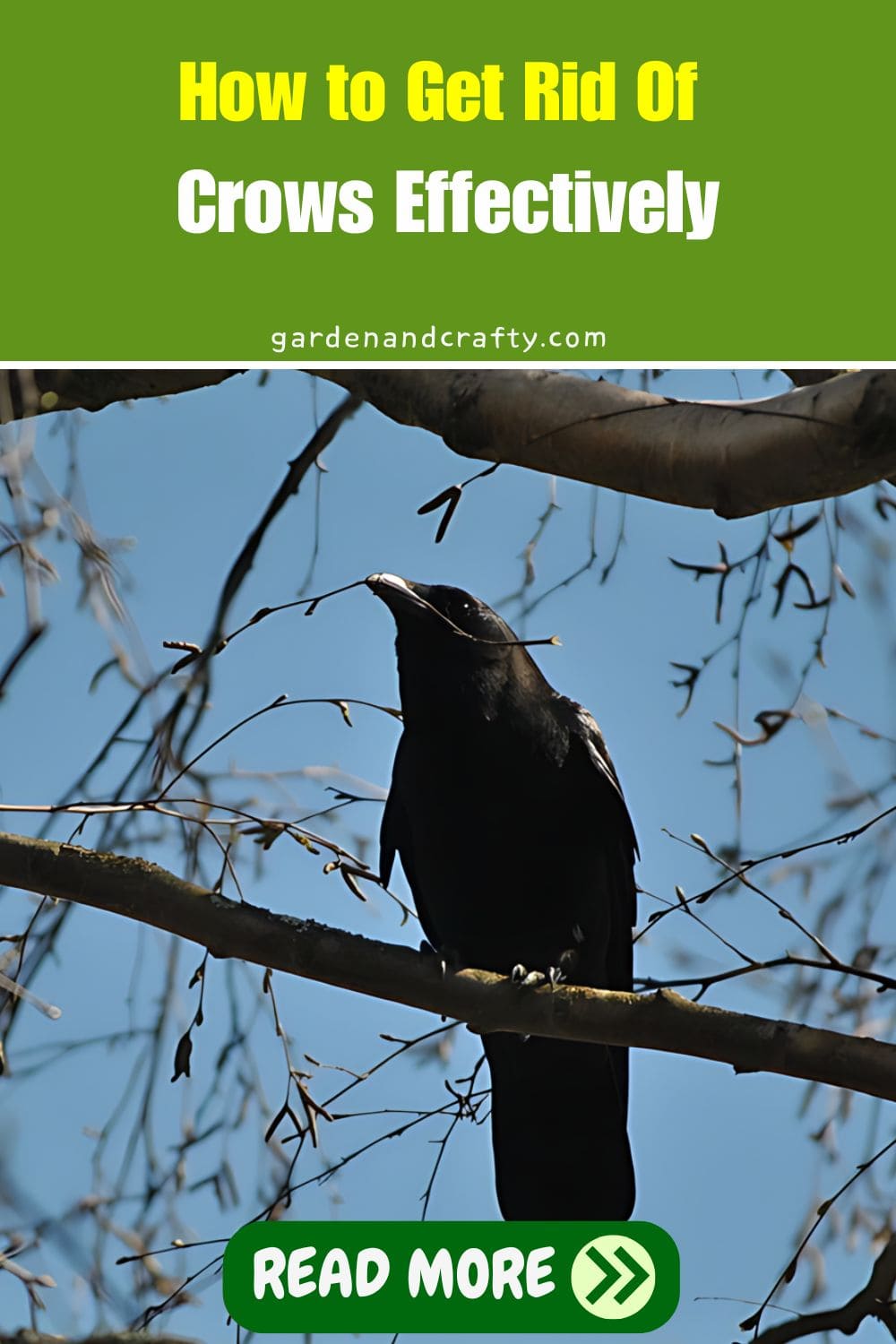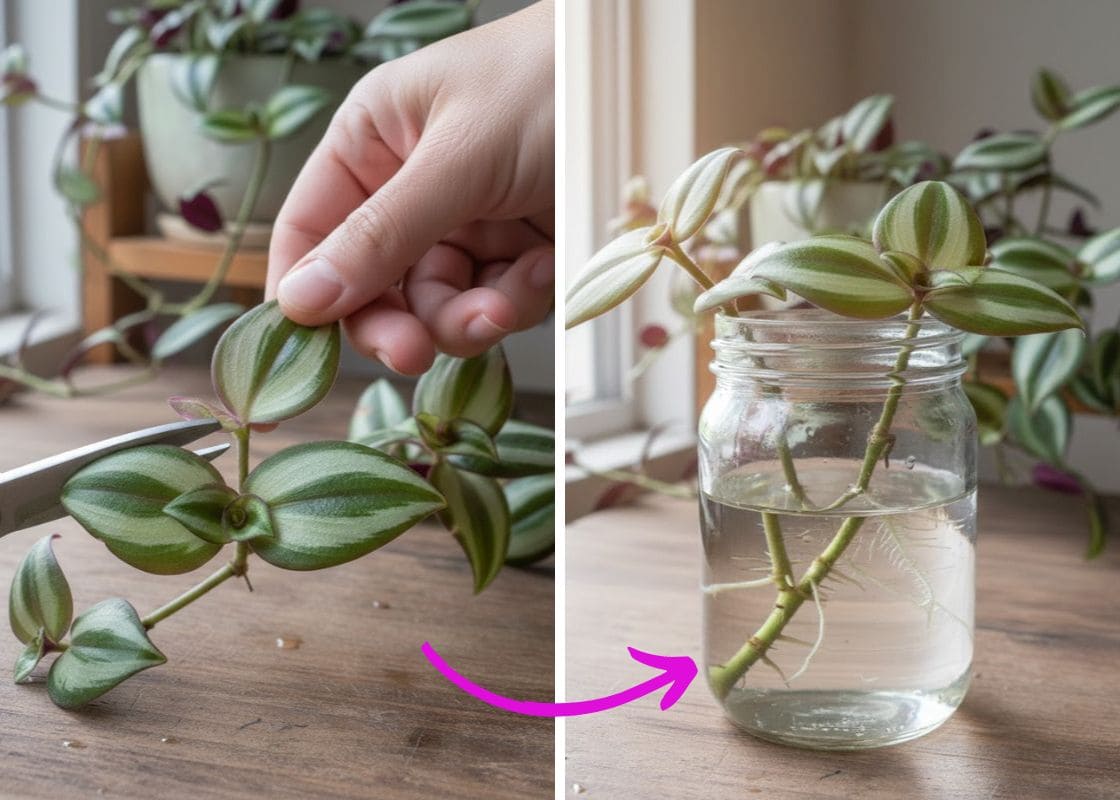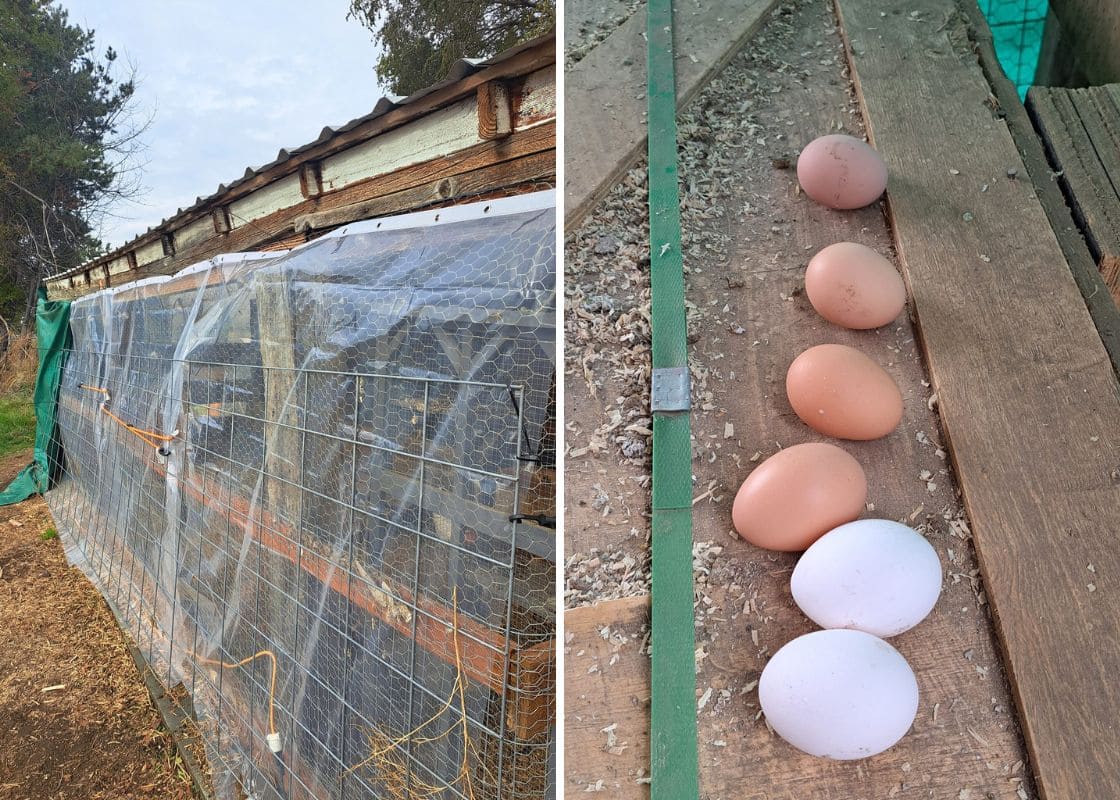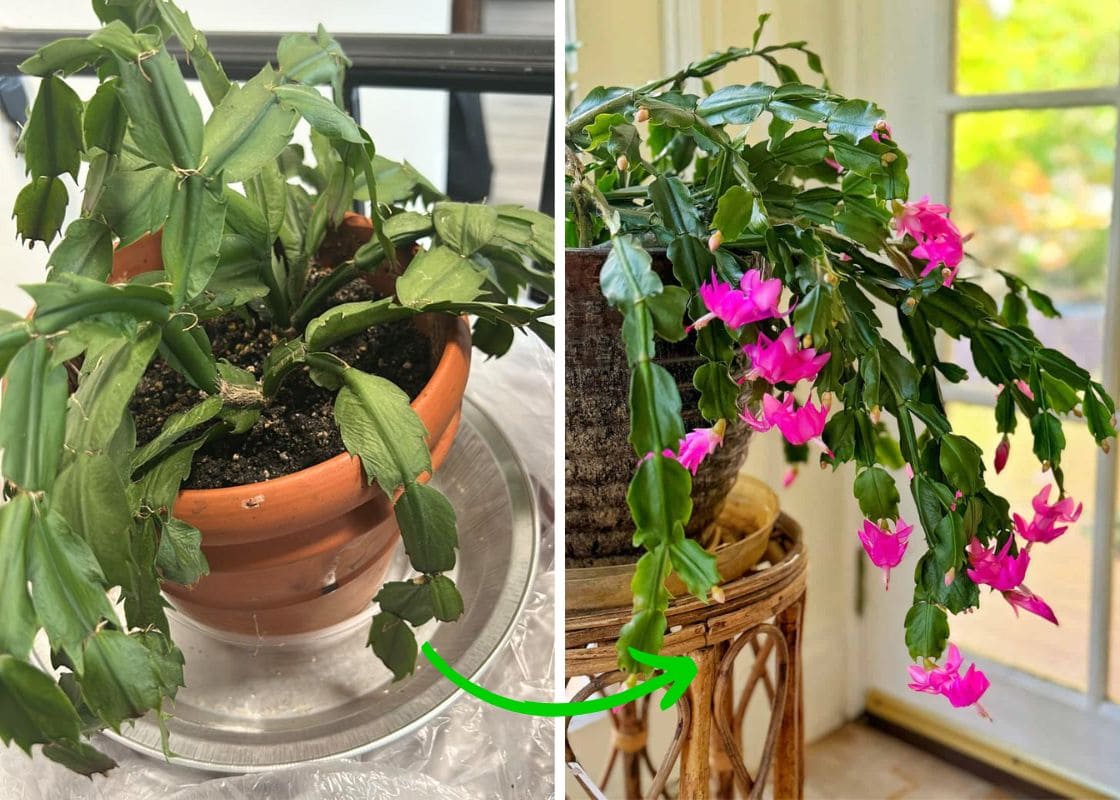On Halloween, the sight of crows adds to the spooky ambiance, their dark silhouettes and eerie caws fitting perfectly with the holiday’s haunting vibe.
But come November, their presence becomes less charming and more of a nuisance.
I remember one fall when my yard turned into a gathering spot for these black-feathered invaders.
Every morning, I’d wake up to the raucous calls of a dozen crows, and my once pristine garden quickly became a mess of feathers and droppings.
| Scientific name | Corvus spp. |
| Type | Bird |
| Size | 16-20 inch length |
| Color | Black |
| Habitat | Urban areas, forests, farmlands, mountains |
| Diet | Omnivorous: insects, small animals, fruits, seeds, carrion |
| Lifespan | Up to 20 years |
| Intelligence | High |
| Vocalization | Wide range of calls |
| Flight | Strong |
Identifying Crows
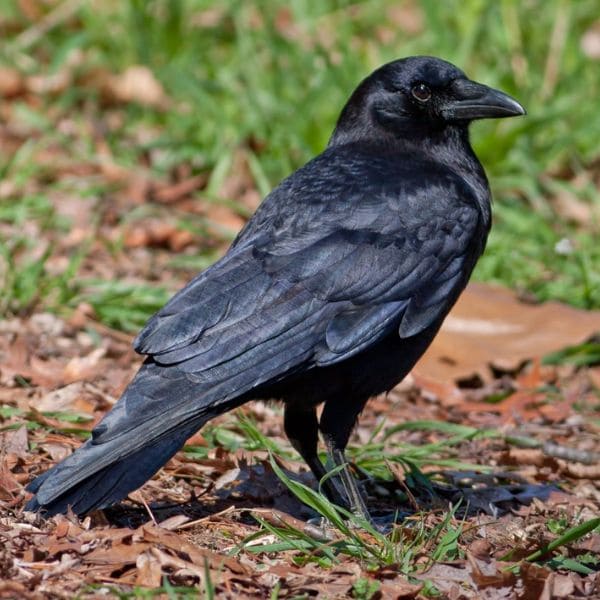
Crows are large birds, typically about 17-21 inches long with black beaks and legs.
The first time I really paid attention to their appearance; interestingly, their dark plumage seemed to absorb the light.
Crows are highly social and intelligent. They communicate with a variety of vocalizations, from the familiar “caw-caw” to complex calls that seem almost conversational.
Studies have shown that crows can use tools, recognize human faces, and even understand basic physics.

There are about 40 species of crows worldwide, with the American Crow and Carrion Crow being the most common.
Differentiating them from similar birds like ravens can be tricky, but crows are generally smaller and have more squared-off tails compared to the wedge-shaped tails of ravens.
Why Are Crows in My Yard?
Crows are highly opportunistic, often drawn to easy food sources, water, and shelter. I noticed they were particularly fond of Max (my dog)’s food bowl and the bird feeders scattered around the yard.
Additionally, during the breeding season, crows seek safe nesting sites, which often include tall trees in our backyards.
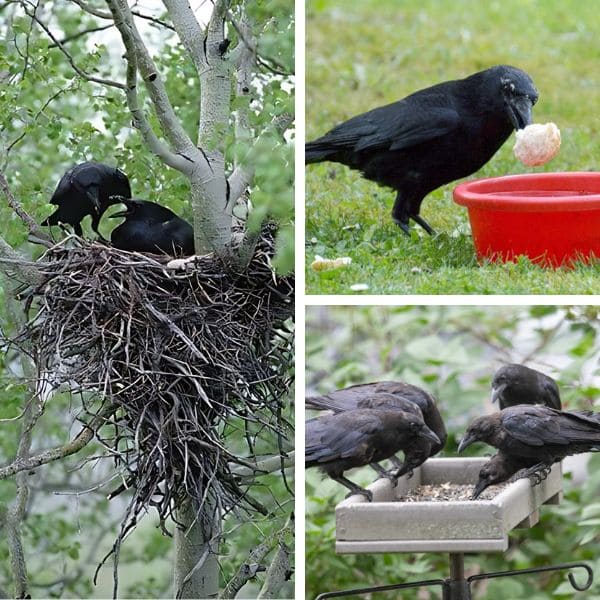
Migration periods can see an influx of crows as they travel and rest in favorable environments.
Not only that, tall trees offer crows safe places to roost and build their nests. I recall one spring when a pair of crows built a nest in the tallest tree turning my yard into a cacophony of calls.
5 Methods To Get Rid Of Crows
#1. Visual Deterrents
I remember vividly the first time I set up a scarecrow in my garden. It was a simple creation, fashioned from old clothes stuffed with straw, topped with a floppy hat.
Initially, it worked like a charm; the crows kept their distance, clearly unnerved by the new figure standing guard.
But crows are smart. After a few days, they seemed to figure out that the scarecrow wasn’t a threat. They started to return, bolder than ever.
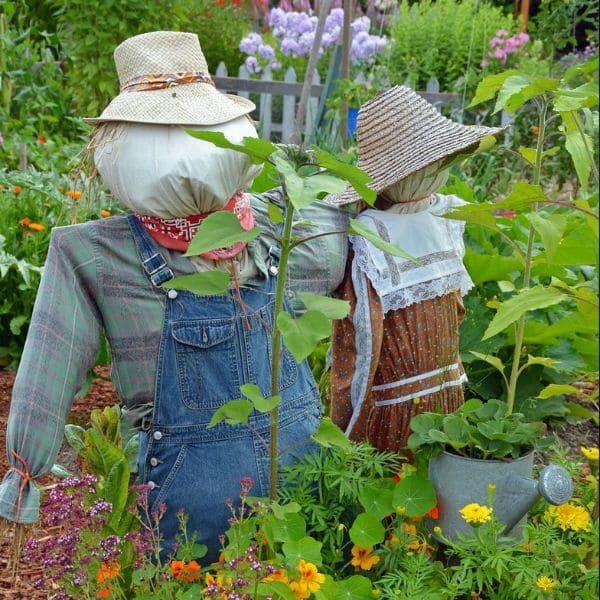
Realizing I needed to up my game, I added some reflective elements to the scarecrow.
Strips of foil and old CDs hung from its arms, catching the sunlight and moving in the breeze. This added movement and sparkle seemed to unsettle the crows anew.
Every few days I moved the scarecrow. One week it would be in the vegetable patch, the next near the fruit trees to make crows uncomfortable.
If you want to make your scarecrow look convincing, frequently check it, adjust the clothes and replace any parts that look too weathered.
Occasionally, you can give it a new hat or an accessory to keep it looking fresh and different.
However, the scarecrow wasn’t a miracle solution, but it significantly reduced the number of crows in my yard.
#2. Auditory Deterrents
Distress Calls
One sunny morning, I decided to try using crow distress calls from my phone. Standing in the middle of my yard, I played the sounds, hoping to see the crows scatter.
But these clever birds quickly figured out that the noise was harmless and kept on with their usual racket.
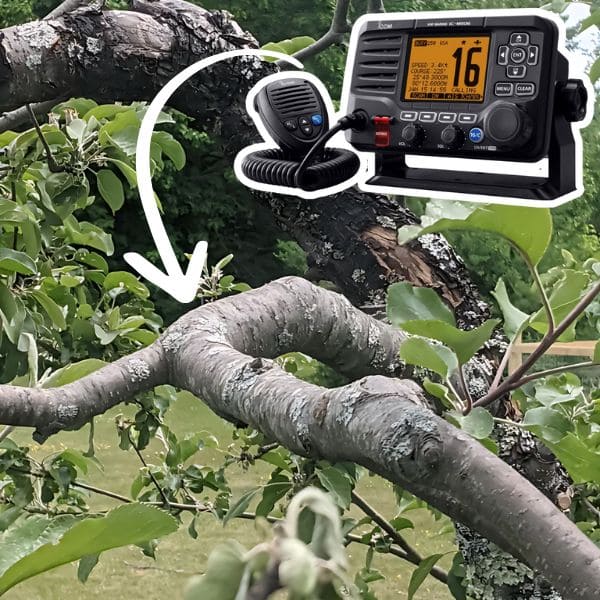
Then a friend gifted me a Bluetooth speaker, and I had an idea. I climbed a ladder and nestled the speaker high in the branches of a tree, pointing it towards the sky.
This time, when I played the distress calls at a moderate volume, something magical happened. The crows fell silent, some took flight, and the persistent chatter ceased.
Playing the calls for about an hour each day gradually sent most of them packing.
Ultrasonic Devices
Buoyed by this success, I decided to experiment with ultrasonic devices. These gadgets emit high-frequency sounds that bother birds but are inaudible to humans.
I placed one near pomegranate tree and set it to activate with motion. Every time a crow approached, the device emitted a silent yet effective deterrent.

I remember watching from my window as a particularly stubborn crow tried to settle in. The ultrasonic device activated, and the bird took off in a flurry of feathers.
Comically, ,the key was the unpredictable activation which kept the crows guessing and uneasy.
#3. Physical Barriers
Netting is excellent for covering crops like berries or vegetables, forming a sturdy shield that prevents crows from landing and snatching your harvest.
It’s crucial to securely anchor the netting to ensure there are no gaps for crafty crows to exploit.
You should start by measuring the area you want to protect and ensure the netting is properly secured using stakes or clips.

Spikes, on the other hand, deter these birds from perching on ledges, fences, or roofs by making these spots uncomfortable for them.
Spikes should be strategically placed in areas frequented by crows, ensuring they can’t find a comfortable spot to perch.
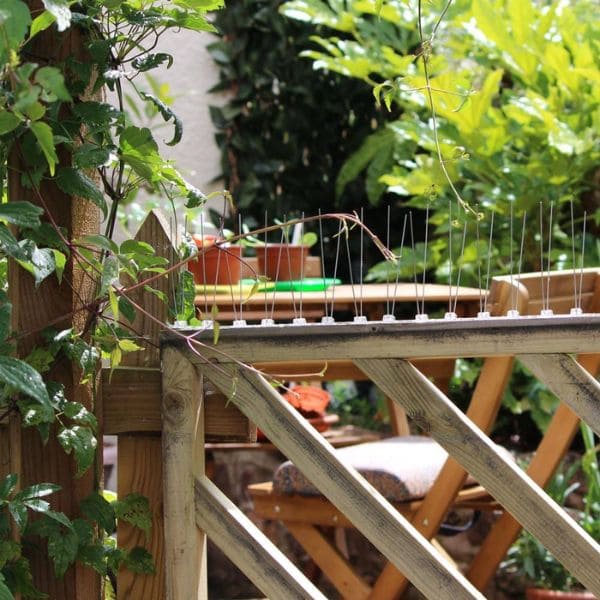
While these methods provide immediate protection, they can alter the aesthetic of your garden or property and require periodic checks.
#4. Chemical Deterrents
When facing a relentless crow problem in the garden, I tried non-toxic sprays made with potent chili pepper extract.
I coated my plants liberally, ensuring every leaf and stem carried a hint of the fiery scent.

Initially skeptical, I watched with amazement as the crows usually bold and persistent approached tentatively, only to recoil after a brief investigation.
The spray seemed creating a barrier that kept my garden safe without harming the wildlife I cherished.
#5. Tree Trimming
I consulted with a local arborist who recommended selectively trimming branches where crows gathered most frequently.
By reducing the dense canopy that provided ideal roosting perches, we disrupted their comfort zone without causing harm.

The process was meticulous, ensuring that the trees remained healthy while eliminating the prime spots for crow gatherings.
The results were remarkable. As the dense cover thinned, the crows gradually dispersed to find alternative roosting sites away from my garden.
It was a relief to see fewer birds swooping down on my crops, allowing me to enjoy a more abundant harvest without constant vigilance.
FAQs
Are crows carriers of diseases?
While crows can carry diseases like West Nile virus, they typically do not pose a significant health risk to humans directly.
However, avoiding direct contact with crow droppings is advisable to minimize any potential transmission.
How often should I reapply deterrents like sprays or netting?
Regularly monitor and reapply deterrents, especially after rain or if effectiveness diminishes to maintain their efficacy throughout the crow season.
How do I permanently get rid of crows?
Achieving permanent crow deterrence may require a combination of methods tailored to your specific situation.
Will vinegar keep crows away?
Vinegar has been suggested as a repellent due to its strong scent, but its effectiveness in deterring crows is limited and may not provide long-term relief.
